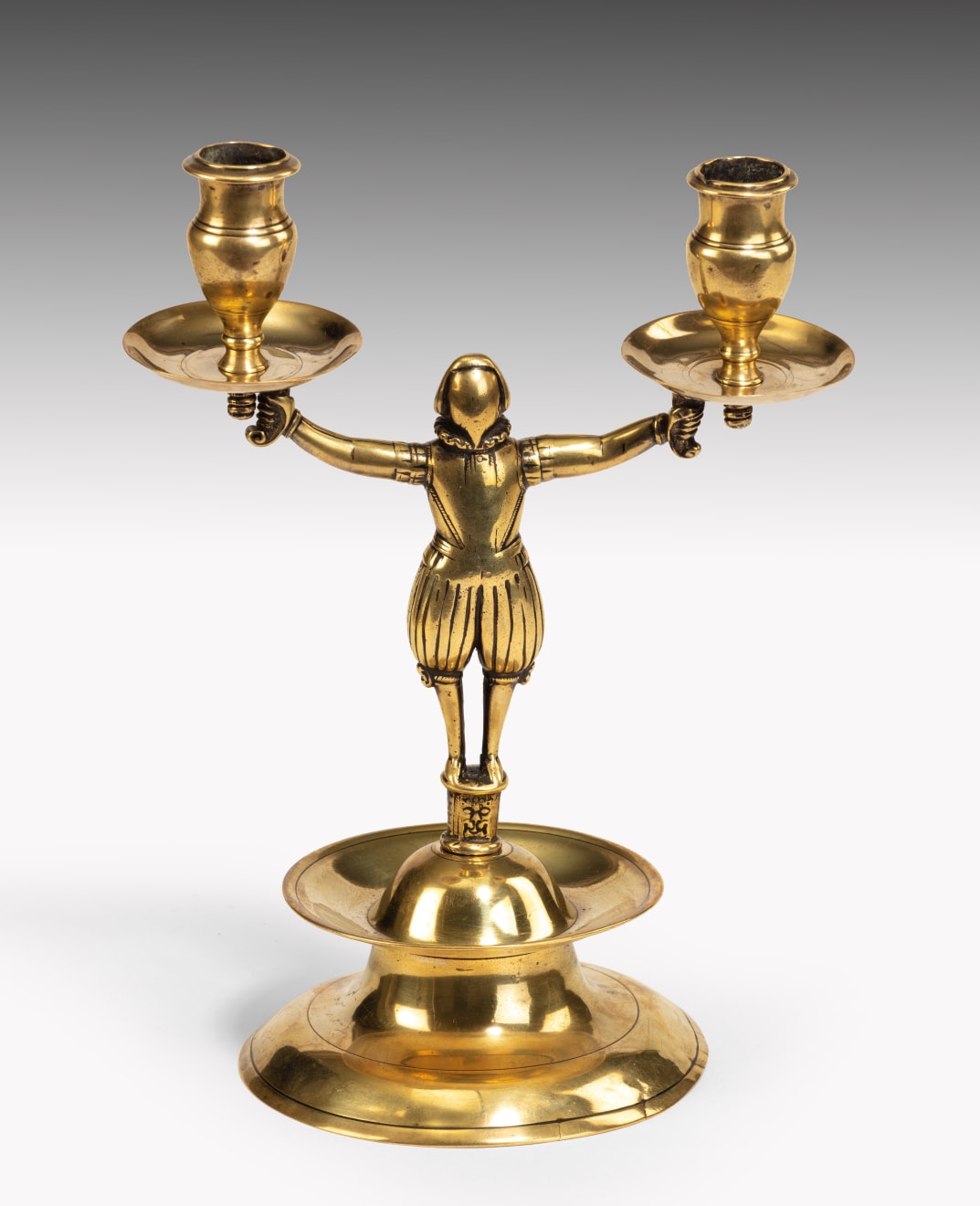16th Century Brass ‘Landesknechtleucher’
30.5 x 23 x 14.5 cm
Further images
A brass double-nozzle candlestick in the form of a man standing on a pillar, which is engraved with the face of a ‘green man’ or a wild man. He is holding a candle socket in both of his outstretched hands. With a circular base. The figure is in contemporary dress – with a ruff which was characteristic of the period 1550-1660; a doublet with long sleeves; and hose. He is perhaps wearing earrings.
This candlestick belongs to a group known in German as ‘landesknechtleucher’ (‘Soldier lamps’), which portrayed contemporary soldiers supporting candleholders, which had developed from the ‘Männleinleuchter’ (‘mannikin lamps’) of the fifteenth century. ‘Landsknecht’ (literally ‘servant of the land’) were mercenary soldiers who became an important military force in late 15th and 16th century Europe. The last living embodiment of the ‘landesknecht’ exists in the Vatican Papal Guard, called the Swiss Guard or ‘landesknecht’.
Examples of ‘landesknechtleucher’ can be found in the Kunstgewerbemuseum, Berlin, and in the Musée d’Art et d’Histoire, Brussels.
The Victoria & Albert Museum has a related brass German candlestick in its collection, dated circa 1540 (Given by Dr W. L. Hildburgh; Museum number: M.4-1953; http://collections.vam.ac.uk/item/O92151/candlestick-unknown/). This candlestick is also a double-nozzle candlestick in the form of a man with outstretched arms. The V&A comments that: ‘The form of the stem and base of candlesticks at this time is the result of a complicated interplay between two typological currents. The first type naturally evolved from the simple European pricket candlestick, where the shaft is supported on three legs. The second type originated in the Near East and had a high cylindrical or slightly conical base surmounted by a flat circular wax pan and a short circular stem. These candlesticks were introduced into Europe by the Muslim community in Venice from the 14th century. Broadly speaking the development of the base of European candlesticks can be attributed to Near Eastern influence, while the stem, which gradually became longer, with an increasingly complicated range of knops and balusters, is largely European in origin. During the 15th and 16th centuries an interesting variation was the replacement of the conventional shaft with a model of a human figure in contemporary dress, as in this example. The outstretched arms supported either a socket or a pricket with a wax pan immediately underneath.
The 1980 exhibition ‘Hempson Exhibition of Fine Works of Art’ included a Flemish double candlestick in the form of a gentleman with outstretched arms. The candlestick is dated approximately to circa 1575 by the costume which the man is wearing. Hempson describes this candlestick as being a characteristic example of ‘dinanderie’ – Flemish brasswork. (‘Hempson Exhibition of Fine Works of Art: An Illustrated Catalogue written in collaboration with Dr. Charles Avery’, 25 June – 23 July 1980, no.43).
The Germanisches Nationalmuseum in Nuremberg has a number of sixteenth century German candlesticks in its collection. (inventory numbers HG 1876; HG 2350; and HG 6978.)








